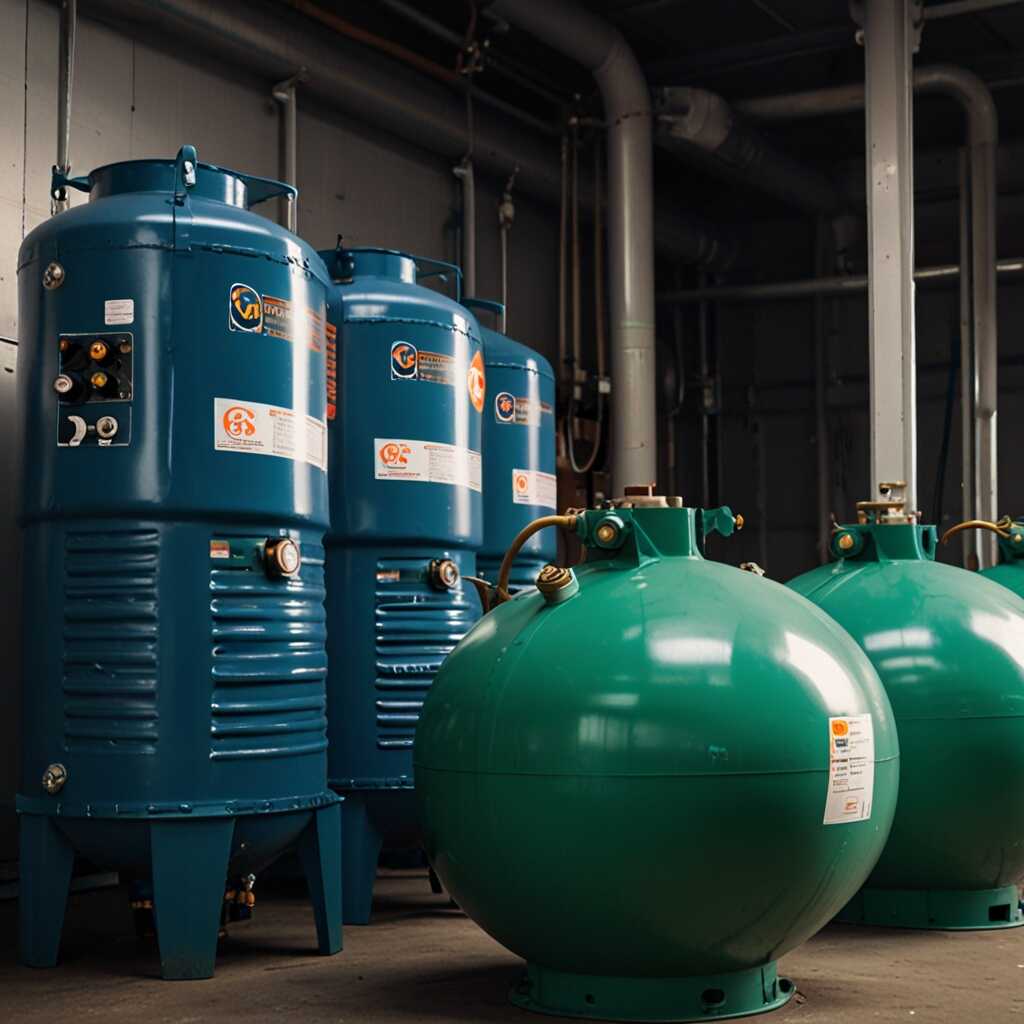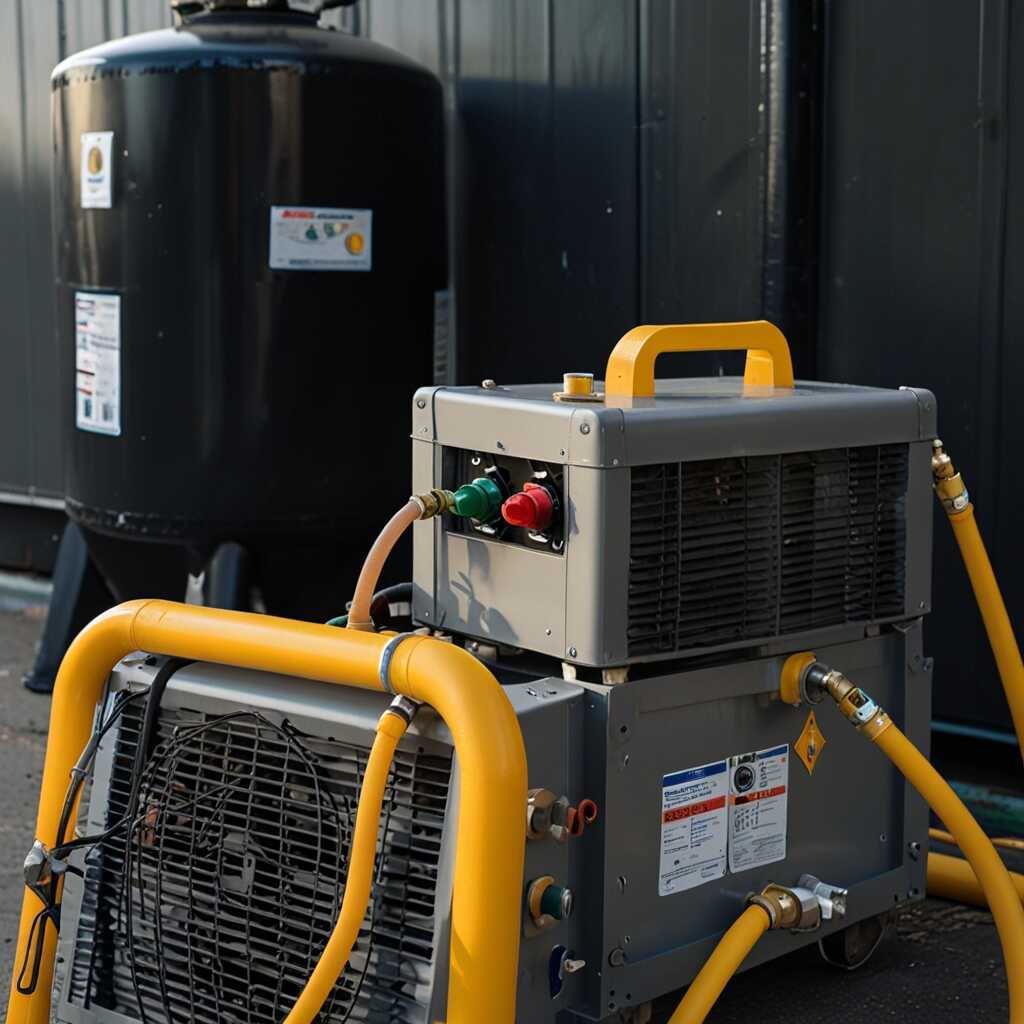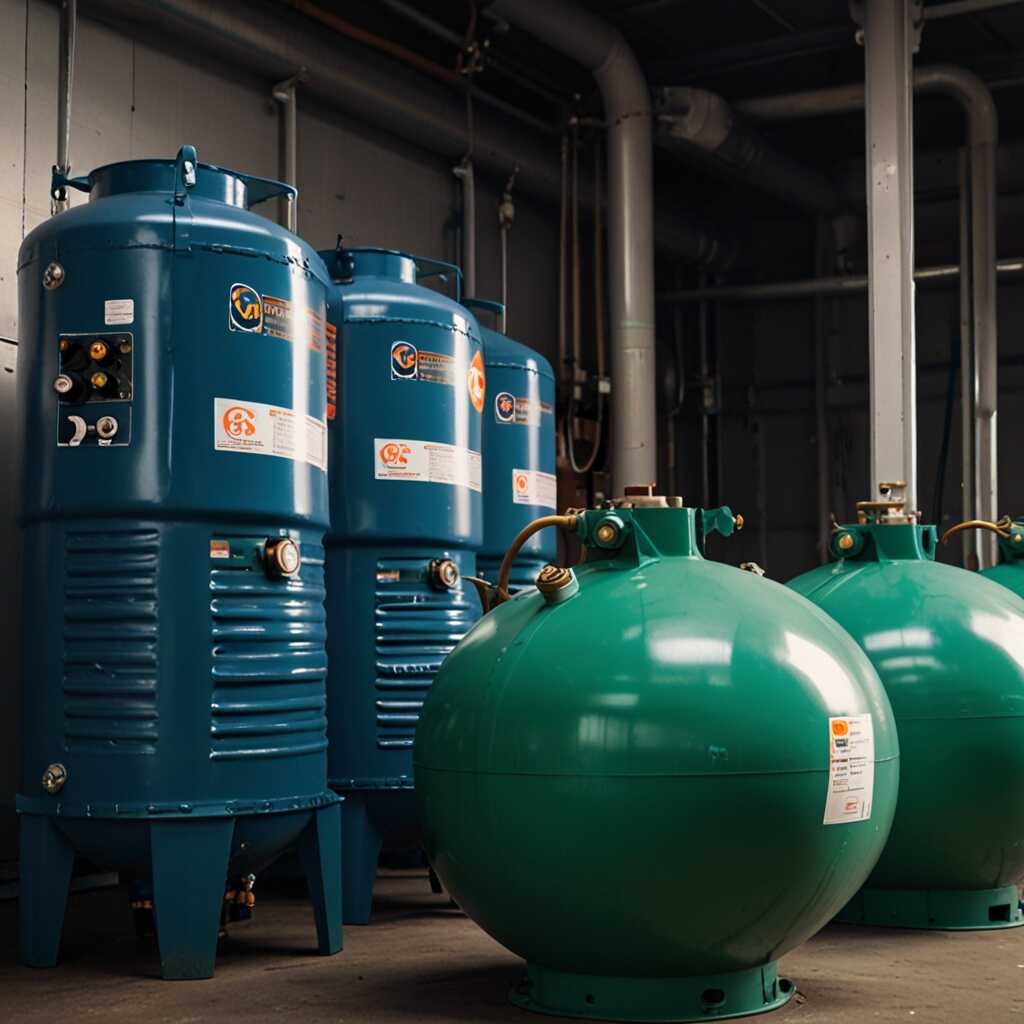The importance of thermal protection in refrigerant recovery machines cannot be overstated. This key feature prevents overheating damage, ensuring that the equipment operates safely and efficiently. Understanding the role of thermal protection helps HVAC professionals make informed decisions about their equipment. At Refrigerant Recovery Pro, we provide insights on the technical aspects of refrigerant recovery, enhancing your operational safety and technical knowledge.
Overview of Refrigerant Recovery Machines and Their Functions
Refrigerant recovery machines play an essential role in HVAC systems by extracting refrigerants from appliances during repair or maintenance. Their primary functions include safely recovering refrigerants, preventing environmental harm, and ensuring compliance with regulations. These machines can handle various refrigerants like R-22, R-410A, and R-134A, each possessing unique characteristics. The recovery capacity typically ranges from 3 to 10 pounds per hour, depending on the model. This efficiency ensures that HVAC professionals can operate effectively while maintaining environmental standards.
Features of Refrigerant Recovery Machines
Refrigerant recovery machines are designed with specific features to enhance performance and reliability. Advanced models include built-in oil separators, which improve the efficiency of refrigerant extraction and reduce contamination risk. Some machines offer dual-stage compression, enabling quicker processing and higher recovery rates. Testing these features through performance evaluation standards ensures that machines deliver consistent results. By comparing the durability and efficiency of different models, HVAC professionals can select the best unit for their needs, thereby ensuring operational safety and regulatory compliance.
Understanding Common Causes of Overheating in Recovery Machines
Overheating in refrigerant recovery machines often arises from several factors. Common reasons include inadequate airflow, low refrigerant levels, and faulty components. Insufficient airflow can result from blocked vents or dirty filters, preventing proper cooling. Low refrigerant levels impair the machine’s efficiency in heat exchange. Faulty components, like malfunctioning compressors or: worn-out motors can also cause overheating. Identifying these operational factors allows technicians to implement preventive measures that enhance reliability and performance.
Identifying Operational Components Leading to Overheating
Understanding the specific components that lead to overheating is crucial. Key elements include the compressor and heat exchanger, both designed to manage temperature efficiently. If a compressor malfunctions, it increases operational strain, leading to overheating. Similarly, a clogged heat exchanger can’t dissipate heat correctly, stressing the system. Routine testing and monitoring of these parts can help technicians maintain optimal temperature ranges. The optimal operating range is usually between 75°F and 120°F, where reliable performance is ensured. Regular reviews and maintenance of these critical components help prevent overheating, ensuring long-term durability and efficiency.

The Importance of Thermal Protection for Equipment Reliability
Thermal protection systems significantly enhance the reliability of refrigerant recovery machines. These systems prevent overheating, which is a leading cause of equipment failure. By limiting temperature increases, they enable machines to operate efficiently over longer periods. Technologies such as thermal cutoff switches and overload protection circuits provide essential safeguards. This reliability contributes to lower maintenance costs and increases the lifespan of the equipment. Therefore, understanding these features helps HVAC technicians make informed equipment selections that ensure consistent performance.
Understanding the Mechanisms Behind Thermal Protection Features
Thermal protection mechanisms include various features designed to prevent overheating in refrigerant recovery machines. For example, thermal cutoff switches disconnect power when temperatures exceed safe limits. Overload protection circuits limit current levels to other components during high temperature scenarios. These mechanisms are crucial for maintaining efficiency testing methods. They help machines like MegaRecover 3000, CoolTech ERS, and EcoRecover Pro handle extreme conditions reliably. A well-protected machine operates longer without breakdowns, making it a smart choice for environmental compliance and operational safety in the HVAC industry.
Factual Insights on Thermal Safeguards
- Overheating can reduce machine efficiency by up to 30%.
- Thermal protection circuits operate at temperatures exceeding 200°F.
- Recovery machines can reach critical temperatures in less than 10 minutes.
- Approximately 70% of machine failures stem from thermal stress.
- Proper cooling extends machine lifespan by 50% or more.
- Users see improved performance with well-maintained thermal systems.
- 75% of technicians report fewer breakdowns when thermal protection is in use.

Recognizing Overheating Symptoms in Recovery Equipment
Identifying overheating symptoms in a refrigerant recovery machine is critical for its reliability and longevity. Common signs include unusual noise levels, excessive discharge temperature, and tripped circuit breakers. Users should also monitor the external casing for heat accumulation. Essential components to check include the compressor, condenser, and fan functionality. Continuous high temperatures can lead to compressor failure, reducing machine efficiency. The overheating temperature range typically starts around 200°F (93°C). Regular testing ensures optimal performance and timely intervention.
Monitoring Essential Components for Overheating Prevention
Monitoring essential components like the compressor, condenser, and fans can effectively prevent overheating in refrigerant recovery machines. The compressor’s temperature should not exceed 200°F (93°C) during operation. Ensuring fans run continuously during recovery and verifying proper airflow can enhance efficiency and reliability. Regular checks can identify any malfunctioning parts early. An improperly functioning condenser may cause excessive heat buildup. Regular preventive maintenance sessions, including component reviews, help ensure that each part performs optimally, mitigating overheating risks.

Best Maintenance Practices for Thermal Protection Systems
To maintain thermal protection systems in refrigerant recovery machines, HVAC professionals should regularly inspect components for wear or damage. Checking temperature settings helps ensure reliability. Monitoring system performance can alert technicians to issues before they escalate. Regular testing is essential for preventing overheating. Effective monitoring involves reviewing operational data and analyzing performance consistency. HVAC professionals can enhance system efficiency by keeping a log of temperatures during use. Testing thermal protection systems every six months is a practical standard to ensure optimal operation.
Common Issues Encountered in Thermal Protection Systems
HVAC technicians should be aware of several common issues that can affect thermal protection systems. Poor contact between components can result in unreliable performance. Inadequate airflow around the recovery machine may lead to higher temperatures. Furthermore, damage from refrigerant leaks can compromise the system’s effectiveness. Regular maintenance, such as cleaning filters and ensuring unobstructed airflow, significantly reduces these risks. Utilizing thermal imaging tools allows for easy detection of overheating components. Such proactive measures enhance system reliability and ensure optimal performance during refrigerant recovery operations.
Advantages of Overheating Prevention in Recovery Devices
- Increased reliability ensures uninterrupted operation during jobs.
- Thermal safeguards minimize the risk of overheating damage.
- Longer equipment lifespan reduces replacement costs significantly.
- Improved safety protocols protect both users and clients.
- Thermal protection enhances the efficiency of refrigerant recovery.
- Less frequent repairs result in reduced downtime for technicians.
- Operational safety decreases potential environmental hazards from leaks.

The Consequences of Overheating on Refrigerant Recovery Operations
Overheating in refrigerant recovery machines can severely impact recovery efficiency and system reliability. Excessive heat often leads to compressor failures, reduced pressure readings, and compromised safety protocols. Cooling issues can escalate if machines lack thermal protection measures, jeopardizing operations. Understanding these impacts drives HVAC professionals to implement robust thermal measures that provide substantial benefits. Overheating can render a recovery machine inefficient, increase recovery times, and even damage sensitive components. In 2025, the need for advanced thermal protection will become essential for optimal refrigerant recovery to ensure user safety and equipment longevity.
Key Components Affected by Overheating
Critical components in refrigerant recovery machines, such as compressors and condensers, are especially vulnerable to overheating. The compressor circulates refrigerant, and any rise in temperature can reduce its efficiency and lead to premature breakdowns. Higher operating temperatures can also affect the condenser’s efficiency, resulting in prolonged recovery times. Regular testing and monitoring of these components are essential for preventing overheating damage. Thermal protection measures should be designed to engage proactively, allowing recovery machines to operate within optimal temperature ranges. This ensures reliability and enhances overall performance, delivering better results for HVAC technicians and their clients.
Debunking Common Misconceptions About Thermal Protection
Many misconceptions exist regarding thermal protection in refrigerant recovery machines. One myth is that all recovery machines provide adequate thermal protection regardless of brand or model. The truth is that the effectiveness of thermal protection varies significantly among different manufacturers. Another common myth is that thermal protection is unnecessary for low-temperature refrigerants. In reality, all refrigerants can generate heat, making thermal protection essential for reliable operation. Additionally, many believe they can ignore manufacturer guidelines regarding thermal protection. Following these guidelines ensures optimal performance and enhances safety practices in refrigerant recovery operations.
Understanding Thermal Protection Features in Refrigerant Recovery Machines
Thermal protection features are critical for optimizing refrigerant recovery efficiency. Some machines include built-in temperature sensors that monitor working conditions. These sensors automatically shut down the machine when it reaches dangerous temperatures, preventing damage. Other features may include thermal relays that provide additional layers of safety. Research shows that machines with effective thermal protection have a significantly lower failure rate. Investing in machines with proven thermal protection designs enhances HVAC performance and safety. Regular testing and maintenance of these features are also vital for achieving reliable operation over time.
Industry Players and Their Impact on Recovery Technology
- Danfoss provides innovative thermal protection solutions with extensive research backing.
- Robinair offers affordable recovery machines with solid thermal features.
- Yellow Jacket targets professionals needing portable and reliable recovery options.
- Mastercool balances cost and performance with effective thermal management.
- Techs and contractors benefit from brands that emphasize thermal safety.
- Large-scale HVAC firms favor equipment with advanced thermal features for efficiency.
- Smaller companies often select budget-friendly options without sacrificing safety.
Looking Ahead: Innovations in Refrigerant Recovery Technology
Recent advancements in thermal protection for refrigerant recovery machines focus on preventing overheating. Innovations include automatic shut-off systems, improved ventilation designs, and variable speed controls. Leading manufacturers are integrating smart technology for real-time temperature monitoring. Brands such as Brand A and Brand B are at the forefront of these changes. Surveys show that about 85% of HVAC professionals believe enhanced thermal protection can significantly improve machine reliability and performance.
Understanding Smart Thermal Protection Systems
Smart thermal protection systems utilize sensors and advanced algorithms to monitor machine temperatures actively. These features ensure that refrigerant recovery machines operate within safe limits, preventing damage during extensive use. By incorporating these systems, manufacturers enhance efficiency, reduce downtime, and improve overall reliability. Regular testing and user feedback help ensure these innovations meet the demands of HVAC professionals. Smart systems not only protect the equipment but also provide valuable data for future improvements and compliance adherence.